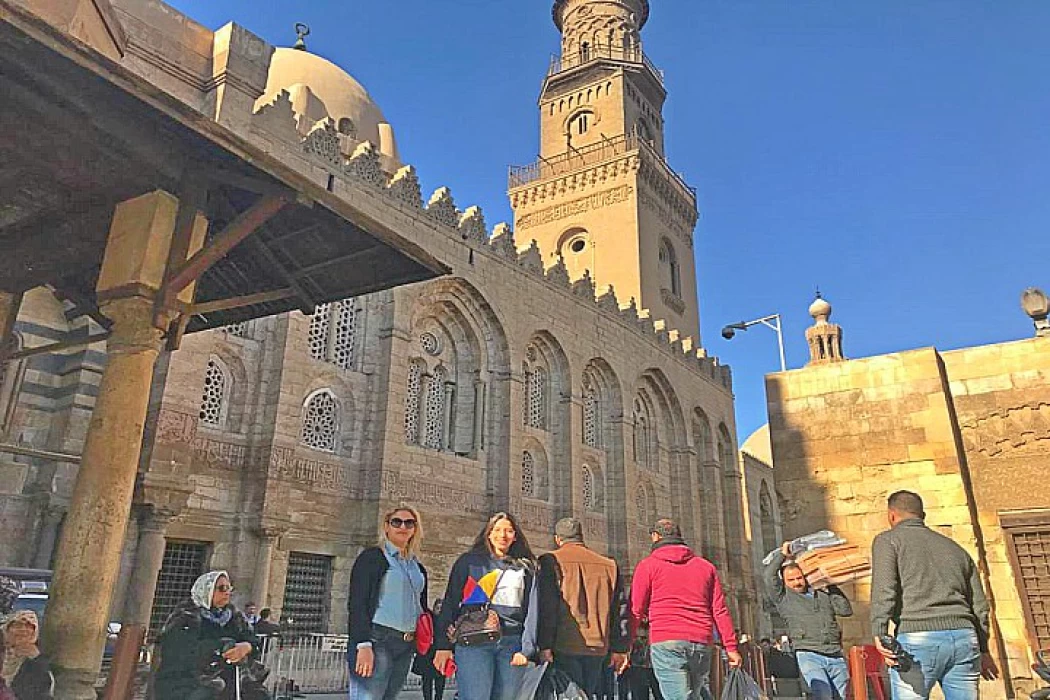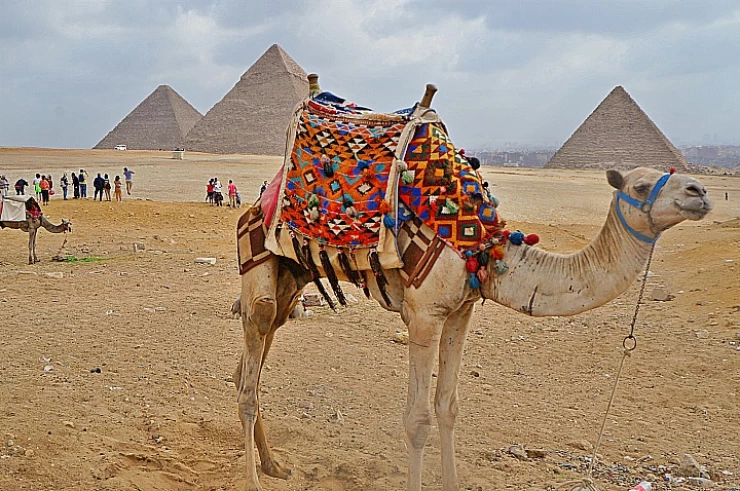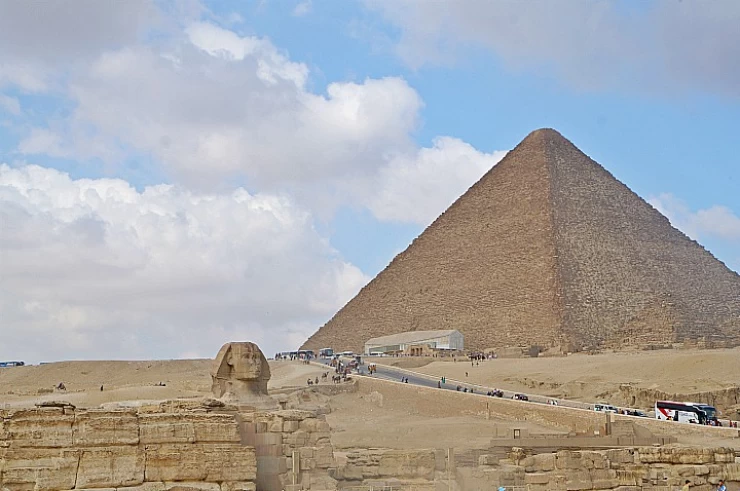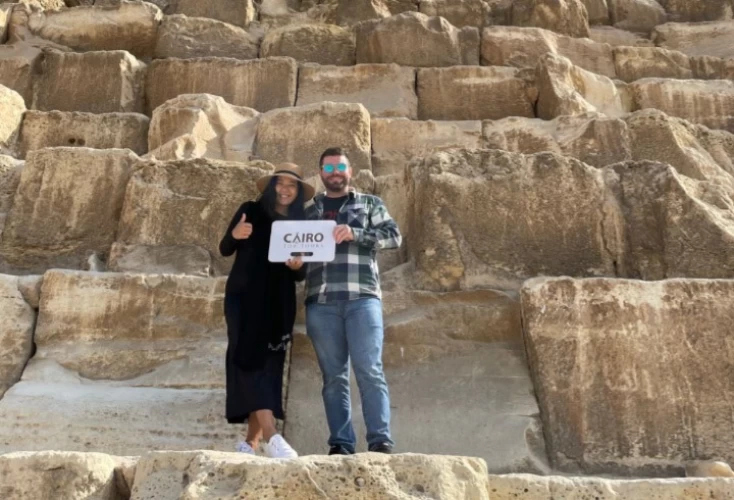
Rua El Moez
Rua El Moez
El-Moez-Street é considerada uma das mais antigas ruas e coisas a fazer no Cairo, especialmente no Cairo islâmico.
Onde foram encontrados os maiores tesouros arquitectónicos do mundo islâmico. É definitivamente o maior museu ao ar livre de arte islâmica do mundo.
Rua Al Muezz, Cairo
A rua Al Mo'ez contém agora a mais distinta quantidade de edifícios e monumentos islâmicos que são visitados normalmente no Egipto durante qualquer viagem ao Cairo islâmico. Percorrendo o coração do Cairo islâmico por todo o seu espaço, de Bab al Futuh a Bab Zuweila, compreendemos como esta estrada é considerada um dos lugares mais vitais do Cairo islâmico.
A secção norte da rua estende-se desde a Mesquita Al-Hakim, que é considerada uma das maiores mesquitas do Egipto e está localizada a norte do Mercado na Rua Al-Azhar, passando pela Mesquita Al-Aqmar (uma das poucas mesquitas Fatimid bem protegidas), bem como pelo complexo de Qalawun.
A Rua El Moez é uma das ruas mais históricas que pode explorar pacientemente durante a excursão ao Cairo islâmico se planear qualquer visita ao Egipto, quando visitar a Rua Al Moez poderá descobrir a civilização islâmica.
A parte sul estende-se de Al Ghuriyah a Bab Zuweila. Um passeio por esta rua, terminando com um labirinto de lojas no clássico bazar de Khan Al-Khalili.
A Rua Al-Muizz torna simples sentir tanto a história do Cairo islâmico como o bairro moderno que existe para além desta arquitectura em desenvolvimento durante muitos dos Passeios do Dia do Cairo. A rua que se desloca de ( Bab Al-Futuh para a Rua Azhar) que é (ao lado de Khan Al-Khalili) foi recentemente restaurada.
Houve também uma concentração sobre a iluminação da rua à noite, de modo que foi acrescentada luz adicional para iluminar os edifícios da rua.
Viaje para o Egipto e desfrute de muitas viagens e excursões diárias a partir das nossas excursões egípcias listadas abaixo. Dar-vos-emos umas indescritíveis boas-vindas a esta terra abençoada do Egipto com a ajuda dos nossos guias qualificados e prontos.
No Egito, há um lugar especial chamado Mesquita de Abo El Dahab. É um lugar onde você pode aprender sobre a cultura e a história do Cairo islâmico.
Discover the historic charm of El Moez Street in Cairo.
Located deep in the city of Cairo, one can find El Moez Street, a gorgeous time capsule of Egyptian history. El Moez Street, known to many as Al-Muizz li-Din Allah Street, is a remarkable phrase that enables one to traverse the corridors of Islamic history enriched by some of the best examples of the medieval Islamic period, perhaps many mosques, dry and wet bazaars, and a variety of other experiences. In this place, there is a harmonious combination of the historical age and the contemporary, fast-paced city of Cairo, leaving one with the feeling of having traveled to a different era.
The Historical Significance of El Moez Street
Named after Al-Muizz li-Din Allah, the street is an ode to the fourth Fatimid Caliph, who conceived the city of Cairo in the 10th century. The street, originally intended to represent the fulcrum of the new city, later developed into one of the central streets of the medieval Croatian town, filled with houses, mosques, and market halls. El Moez Street retains traces of this history, having changed over centuries as Cairo became an administrative center and later, a commercial center.
Moreover, it is still among the oldest stretches of way in Cairo, which has some historic structures that have been very well preserved. Walking along El Moez Street feels as though one is traversing an open museum of art that tells the story of Egypt’s Islamic Art period, which lasted from the 10th century to the 17th century. The street can support attestation of Cairo’s illustrious past, where it served as a melting pot for different cultures and one of the many fascinating architectural attributes of the street, making it the world’s most beautiful intracity street.
Architectural Marvels Along El Moez Street
El Moez Street is characterized by a wide range of architectural works that include buildings from various Islamic Empires, such as the Fatimid, Mamluk, and Ottoman civilizations. Each structure is unique with detailed decoration and its cultural history. Here are some of the highlights that you should not miss while walking down the street:
Al Azahar
Though slightly tucked away from the main street, Al-Azhar Mosque is just within walking distance, and it is one of the oldest and most revered centers of worship located in the Islamic World. Constructed in 970 A. Dominated by the center of Islamic culture, Al-Azhar, for quite a few ages, this mosque is remarkable for its incredible design. The minarets are elegant, and the mosque’s courtyard is vast.
Al-Hakim Mosque
Al-Hakim Mosque is dedicated to Al-Hakim bi-Amr Allah, who ruled in the East for some time. This edifice was built during the short period when the Fatimid Empire flourished and is an example of Fatimid architecture. It has giant minarets, a grand prayer place, and decorated vaults, landscapes, and corridors built in the 11th century. This mosque is still intact even after undergoing several restorations in the course of its history, which has managed to keep the historical part of Old Kam, so it is still preserved for the coming generations.
Sabil-Kuttab: an 18th-century structure within the Katkhuda complex
This remarkable building dates back to the 18th century and is a typical example of Ottoman-styled structures. A “sail” is a dome where people fetch drinking water free of charge, while a “kuttab” is a place for teaching the children the Quran. The elaborately decorated ceiling of the building, embellished in marble, tiles, and other materials, draws the attention of many people, making it a great site for taking photographs.
Qalawun Foundation
Among the most remarkable exercises of architecturally constructed space, which embraces a mosque, a madrasa, and an institution, is the Qalawun complex. The complex was built during the era of Sultan Qalawun in the 13th century. It is typical of Mamluk's architectural style. The artistic complexity of this institutional building is beyond comprehension, having stunning intricate woodwork, stone, and marble work, as well as beautiful domes.
Home of Al Suhaymi
The house has been fully restored to its glory during the Ottoman period, showcasing the life of a prosperous 17th-century merchant. The house to this – Bayt Al-Suhaymi – comes with wooden mesh windows, a beautiful inner garden, and skillfully decorated interior signs that carry the touch of the old Cairo charm.
Situated a few meters from El Moez Street is Khan El-Khalili, a marketplace that allows tourists to buy authentic Egyptian goods, such as jewelry, spice, cloth, antiques, and much more. Filled with colors, choking with scents, filled with shouting and noise—this is the market, where people come to buy and sell.
El Moez Street is not only a great number of historical edifices standing side by side, but also a lively place full of activity for the natives and visitors around the year. Throughout the year, this street experiences different cultures in the form of arts, theater, music, folklore, and other forms of entertainment.
As you stroll through the street, you’ll find musicians playing Egyptian traditional music, artists at work, and the aroma of street foods such as falafel, koshari, and desserts like basbousa and konafa fills the air. As night falls, lanterns and colored lights are turned on as they embellish the street, making it attractive turned beautiful.
The Tannoura Dance Show is among the most done activities along El Moez Street. This is a Sufi worship dance that is performed by trained dervishes in multicolor skirts to the traditional music. This is an enjoyable experience that one has to witness. This performance normally happens at Wekalet El Ghouri, which is an old caravanserai recently used as a cultural center.


















